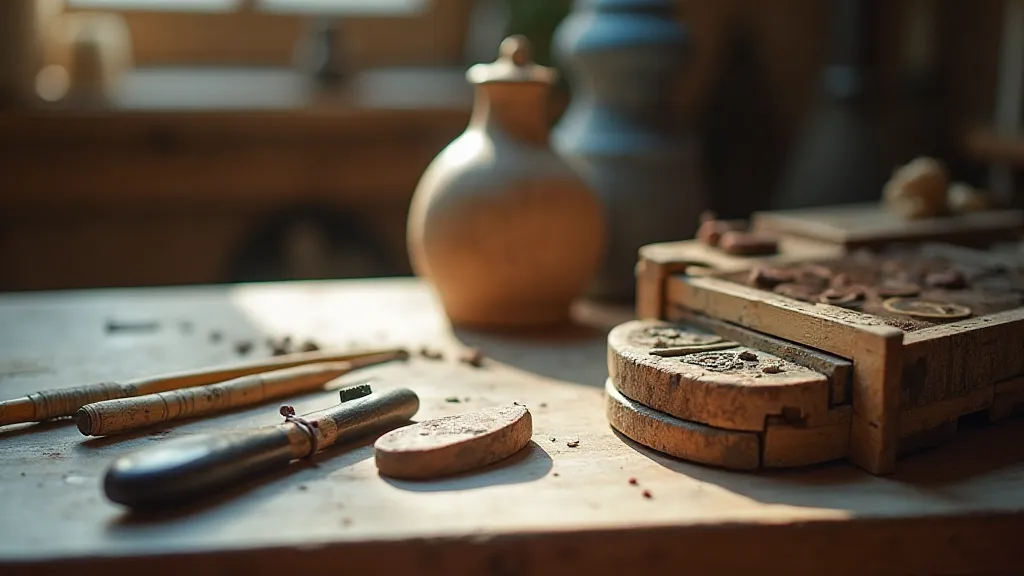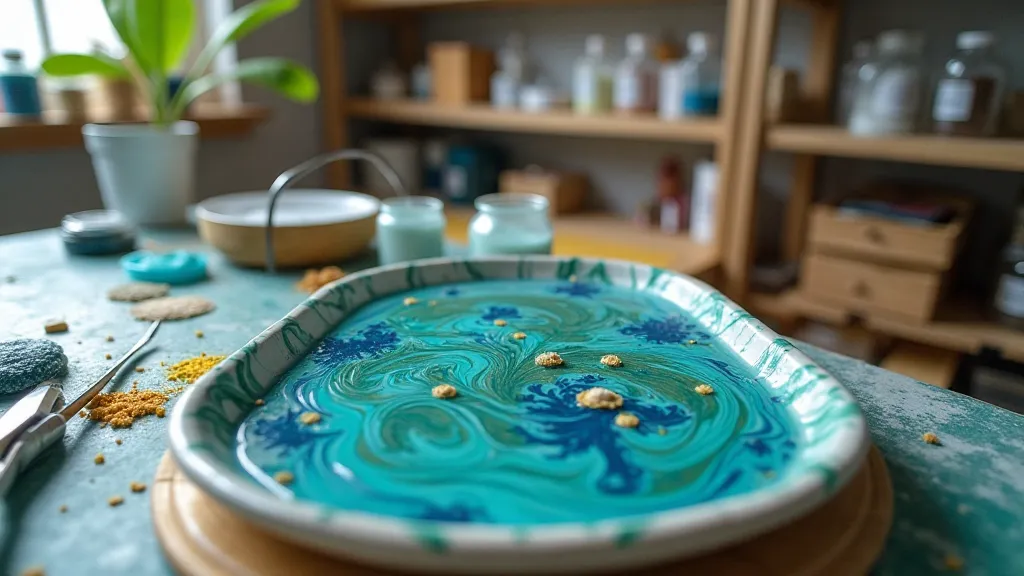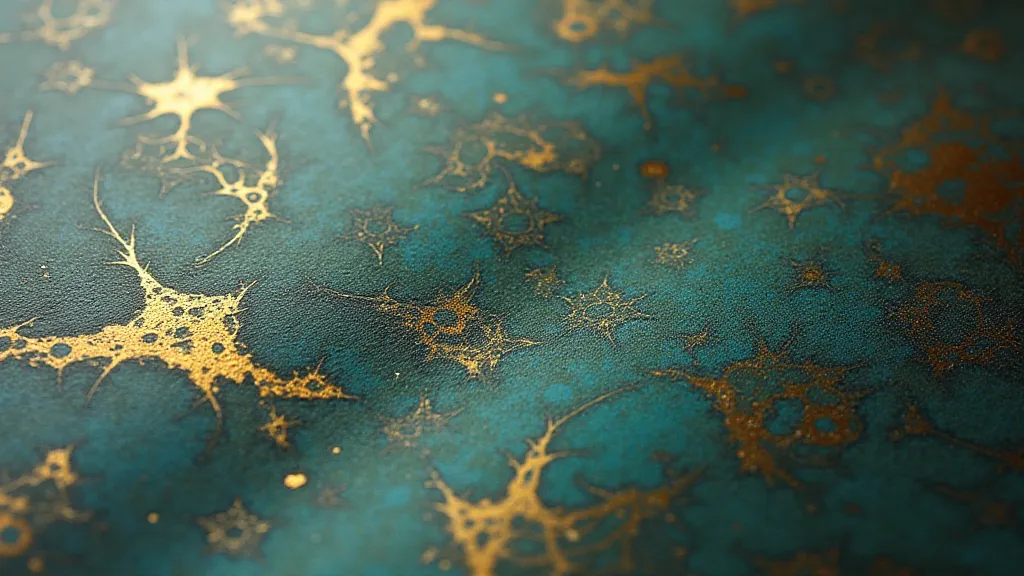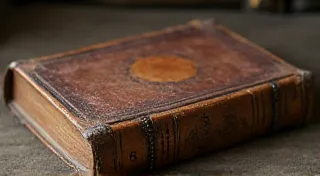The Swirl's Embrace: Finding Comfort and Inspiration in the Unexpected
There’s a peculiar comfort in watching something unfold that is inherently, beautifully, beyond your control. It’s a surrender, not of hope, but of expectation. I found this solace years ago, not in meditation or a tranquil landscape, but in the chaotic beauty of paper marbling. Before I understood the science, the pigments, the meticulous preparation, I was simply captivated by the dance – the way colors bloomed and intertwined on the surface of the water, creating patterns unlike any other.
A Historical Echo, a Modern Resonance
Paper marbling, or Ebru as it’s known in Turkey, boasts a history as rich and complex as the swirling patterns it produces. Its origins are debated, with influences potentially stemming from Persian and Chinese decorative techniques, evolving and flourishing within the Ottoman Empire. The earliest known examples date back to the 15th century, adorning the edges of Qurans and other precious manuscripts. To imagine artisans, centuries ago, meticulously creating these ephemeral artworks – each one a unique, unrepeatable moment in time – is profoundly moving. It’s a connection to a lineage of creativity that transcends borders and eras.
My initial fascination wasn’t driven by a desire to recreate historical techniques, although I’m certainly drawn to their elegance. It was a deep-seated need for an art form that wasn’t about perfect lines or rigid structures. I often felt constricted by those constraints in other mediums. Paper marbling offered liberation – a space where imperfection wasn't a failure, but the very essence of the process.

The Dance of Color and Water
The process itself is surprisingly simple in theory, surprisingly complex in practice. You begin with a bath of water thickened with a binding agent – traditionally, tragacanth gum. This thickened water acts as a temporary canvas. Then comes the magic: pigments, carefully dispersed in oils, are dropped onto the surface. These pigments don't sink; they float, poised to interact with each other.
The real artistry lies in manipulating these floating pigments. Brushes, combs, and specially shaped tools are used to coax the colors into swirling patterns. A "French Curl" creates delicate, looping forms. A "Spanish Wave" produces dramatic, flowing lines. A simple drag of a comb can create astonishing complexity. Each tool imparts a unique characteristic to the resulting pattern.
It's a delicate balance. Too much pressure, and the colors muddy. Too little, and the patterns are weak. It requires a keen eye, a steady hand, and a willingness to embrace the unexpected. And that's the core of its appeal. No two attempts are ever the same.
Finding Comfort in the Unpredictable
I’m a collector of antique accordions. There’s something profoundly beautiful about the mechanics, the engineering, the sheer ingenuity of these instruments. But like any antique, they are fragile, susceptible to the ravages of time. Restoring them is a process of careful preservation, of coaxing life back into something that was once silenced. It’s a delicate dance between intervention and observation, between repair and respect for the original craftsmanship.
I find a similar kind of peace in paper marbling. It’s a controlled chaos, a reminder that beauty can emerge from imperfection. The vibrant, unpredictable patterns are a stark contrast to the often-rigid structures of modern life. Watching the colors swirl and blend, knowing that the outcome is, to a significant degree, beyond my direct control, offers a sense of release.

More Than Just Paper: A Reflection of the Soul
Paper marbling isn’t just about creating beautiful sheets of paper. It's about a process of self-discovery. It’s about letting go of expectations and embracing the present moment. The patterns that emerge are often surprisingly reflective of one’s emotional state – the calm, controlled swirls mirroring a sense of peace; the chaotic bursts reflecting moments of anxiety or excitement.
I'm drawn to the sense of connection it fosters – connection to the past, to the natural world, and to my own inner landscape. There’s a meditative quality to the process, a quiet sense of flow that allows me to disconnect from the noise of everyday life and reconnect with my creativity.
Collecting and Preservation: A Gentle Touch
For those interested in acquiring paper marbled works, the journey is often as rewarding as the final acquisition. Antique marbled paper is most frequently found as decorative edging on manuscripts or as a rare embellishment on books. Condition is paramount; look for areas of fading, damage from moisture, or discoloration. A gentler touch is crucial when handling these fragile pieces. Avoid direct sunlight and excessive humidity to preserve their vibrancy.
Restoring antique marbled paper is a nuanced task. Cleaning requires careful methods to prevent damage to the pigments. Re-marbling a damaged sheet is exceptionally challenging, requiring extensive knowledge of traditional techniques and materials. However, even a small fragment of marbled paper can hold a powerful story, a tangible link to a bygone era.

The Enduring Allure
The art of paper marbling is more than just a technique; it’s a philosophy. It’s a reminder that beauty doesn’t always come from precision and control. Sometimes, the most exquisite creations are born from surrender, from a willingness to embrace the unexpected. It's a comfort – a gentle reminder that even in a world of constant change, beauty can always be found in the swirl's embrace.





